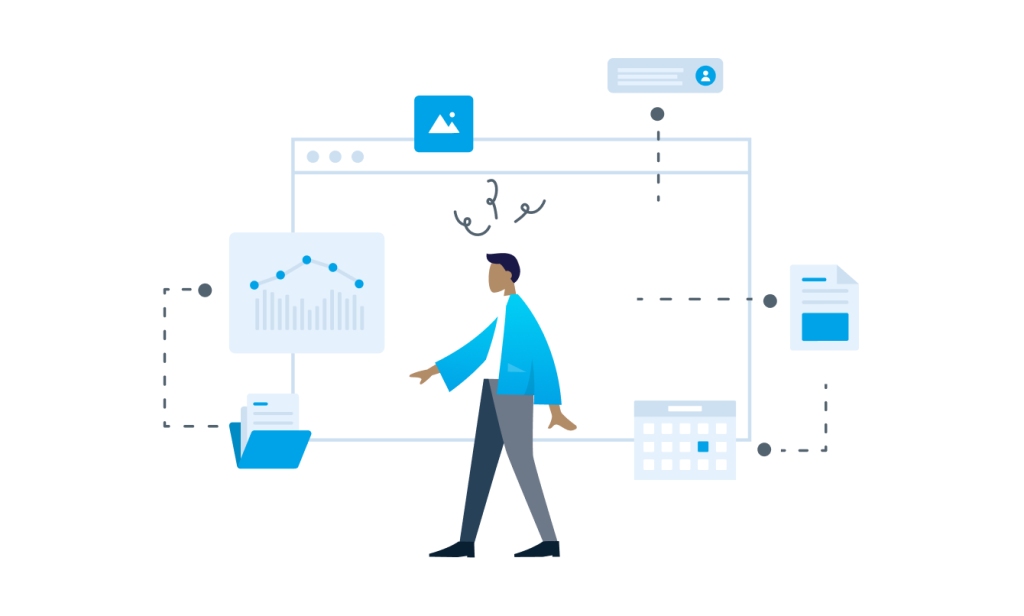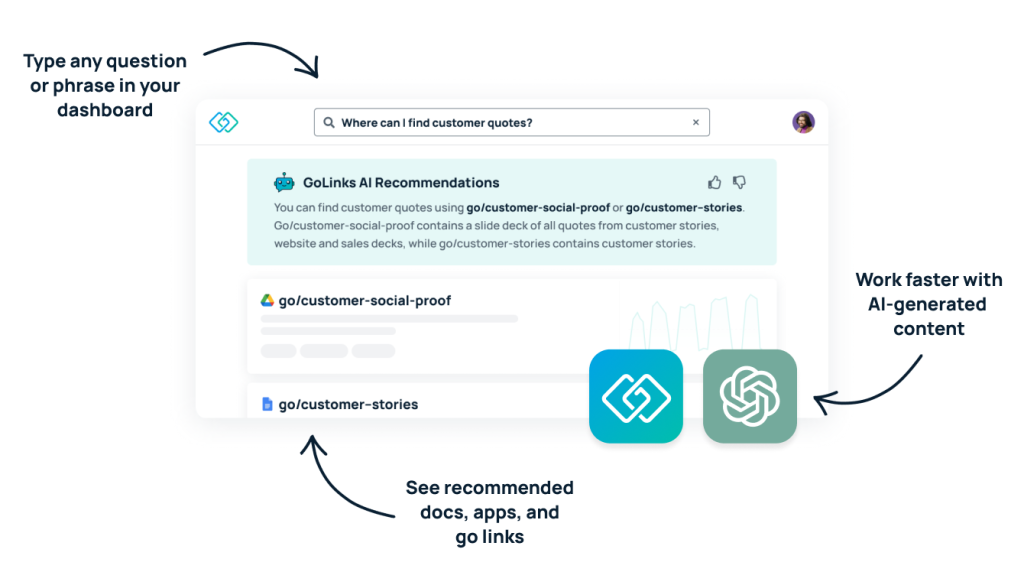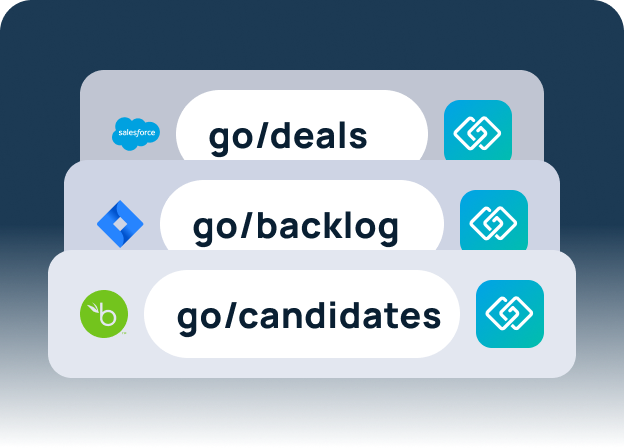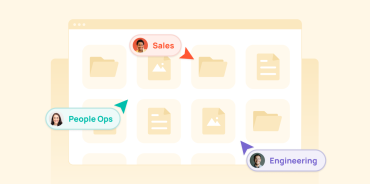Quick Read: How AI Reduces Human Error
AI reduces human error in the workplace by automating repetitive tasks, analyzing massive amounts of data, and providing real-time insights that detect problems before they escalate.
Through machine learning algorithms, predictive analytics, and built-in AI guardrails, organizations can significantly reduce mistakes in areas like finance, HR, manufacturing, and customer service.
Tools such as GoLinks, Fireflies, and Grammarly help prevent common workplace errors — from lost files and scheduling conflicts to miscommunication and incorrect data entry — creating a digital workplace that’s faster, smarter, and more reliable.
The Growing Cost of Human Error
Making mistakes is part of being human — but in the workplace, even small errors can have serious consequences. Whether it’s a missed email, an incorrect formula, or a misplaced document, human errors can cost organizations time, money, and credibility.
The good news? Artificial intelligence (AI) is helping teams work smarter, safer, and more accurately than ever before. By analyzing large amounts of data, identifying patterns, and providing real-time recommendations, AI can detect potential problems long before humans are aware of them. From automated quality checks to predictive analytics and AI-powered digital assistants, today’s technology is quietly transforming how companies reduce human errors and build more reliable systems.

Why Human Error Still Costs Businesses Billions
Even in the digital age, human mistakes remain one of the biggest risks to productivity and compliance. A single typo in a spreadsheet or a misfiled document can cascade through an entire organization. Studies show that companies lose billions each year to manual data entry errors, duplicated information, and poor communication.
These issues often stem from:
- Distraction and fatigue can lead to lapses in focus.
- Information overload, with employees switching between dozens of apps daily.
- Manual processes, such as copying data or updating spreadsheets by hand.
- Miscommunication, caused by inconsistent documentation or lost messages.
- Weak cybersecurity practices, including reused passwords or missed updates.
AI changes this dynamic. Rather than relying on people to manually detect or correct errors, AI systems monitor, predict, and prevent them — automatically.
Understanding the Root of Workplace Mistakes
To understand how AI reduces human error in the workplace, it helps to recognize where mistakes come from. Psychologists generally classify them into three categories:
- Skill-based errors — slips or lapses during routine tasks (e.g., clicking the wrong button).
- Rule-based errors — following an incorrect procedure or misapplying a known rule.
- Knowledge-based errors — poor decisions caused by missing or misunderstood information.
Each of these errors becomes more likely when employees face tight deadlines, unclear processes, or digital overload — the exact situations where AI systems thrive at maintaining consistency.
How Does AI Reduce Human Error?
AI minimizes mistakes through a mix of automation, machine learning algorithms, pattern recognition, and feedback loops. Below are the core ways it improves accuracy across the modern workplace.
1. Automating Repetitive and Routine Work
Humans are most likely to make mistakes during repetitive, low-judgment tasks. AI algorithms excel at automating those processes, from data entry to invoice matching.
Examples:
- In finance, AI models automatically reconcile records and detect fraud, eliminating manual mis-keying.
- HR tools like GoProfiles build stronger workplace culture — automatically celebrating milestones, recognizing achievements, and reinforcing connection across teams.
- In marketing, AI adjusts ad bidding and budget pacing continuously, maintaining precision even when campaigns shift hourly.
Automation reduces cognitive load, prevents burnout, and dramatically lowers the overall error rate.
2. Identifying Patterns Hidden in Massive Data Sets
Humans can’t process every signal in today’s complex data landscape. AI development leverages advanced machine learning algorithms to analyze millions of records and identify patterns that would otherwise go unnoticed.
- In manufacturing, predictive maintenance tools detect subtle vibrations that forecast mechanical failure.
- In healthcare, diagnostic AI reviews imaging data and highlights anomalies for clinicians to verify.
- In knowledge-driven companies, AI-powered search tools like GoSearch uncover missing or outdated files across Slack, Confluence, Google Drive, and SharePoint — ensuring teams act on verified information.
These insights allow organizations to fix small inconsistencies before they turn into large-scale errors.
3. Monitoring Systems in Real Time
Unlike periodic human reviews, AI continuously monitors data streams for anomalies and alerts teams the moment something appears out of the ordinary.
- In cybersecurity, AI detects unusual login patterns or credential misuse instantly.
- In logistics, algorithms flag delivery delays or inventory mismatches before they affect customers.
- In customer support, sentiment analysis pinpoints when conversations are deteriorating, allowing proactive intervention.
This real-time detection closes the gap between error and correction — improving uptime, accuracy, and reliability.
4. Reducing Bias and Inconsistency
Even highly skilled employees can introduce unconscious bias or inconsistent decisions. Properly governed AI helps reduce those risks:
- Recruiting: AI-powered platforms analyze candidate profiles to match skills with job requirements, automate interview scheduling, and reduce bias — ensuring every applicant gets a fair and consistent experience.
- Quality: AI-powered computer vision systems inspect every product with consistent, objective standards — eliminating human fatigue and ensuring quality never slips.
- Compliance: AI systems powered by natural language processing (NLP) automatically scan policies, contracts, and communications for potential risks or violations — ensuring consistency, accuracy, and accountability without subjective bias.
By applying the same logic repeatedly, AI systems deliver consistent, unbiased results — an essential safeguard in regulated industries.
5. Supporting Smarter, Data-Driven Decisions
AI doesn’t just automate — it augments human judgment. Using advanced analytics, retrieval-augmented generation (RAG), and contextual recommendations, AI gives employees fast, verified insights that improve decision quality.
- AI assistants summarize meetings, highlight action items, and draft follow-ups, reducing forgotten details.
- AI search platforms, such as GoSearch, combine enterprise data sources into a single search bar, surfacing relevant answers instead of endless documents.
- Forecasting models in sales and operations provide confidence ranges and predictive alerts, minimizing reliance on gut instinct.
The result: decisions grounded in data, not memory — dramatically lowering the risk of error.

Real-World Tools That Prevent Workplace Mistakes
| Tool | Function | Result |
| GoLinks | Converts long URLs into short, contextual “go/” links and answers questions about internal docs. | Fewer broken links and faster knowledge access. |
| Fireflies.ai | Records and transcribes meetings automatically. | Eliminates forgotten notes and miscommunication. |
| Grammarly | Uses contextual AI models to refine writing and tone. | Reduces communication errors and maintains consistency. |
| Motion AI | Builds and updates schedules based on workload priorities. | Prevents scheduling conflicts and missed deadlines. |
Each represents how AI-powered automation enhances accuracy and reliability across departments.
AI Across Key Industries
Finance
Machine learning models detect suspicious transactions faster than human auditors, ensuring compliance and reducing manual oversight errors.
Customer Service
Generative assistants use retrieval-based models to maintain up-to-date, verified responses — lowering misinformation rates by as much as 70%.
Human Resources
AI in HR automates data validation, tracks engagement sentiment, and maintains payroll accuracy — while built-in guardrails ensure data privacy and fairness.
The Technology Behind Error Reduction
Several core technologies work together to minimize human error:
- Machine Learning Algorithms — learn from patterns to detect anomalies and predict outcomes.
- Natural Language Processing (NLP) — interprets text or speech for clearer communication.
- Computer Vision — identifies defects or hazards visually.
- Predictive Analytics — forecasts issues before they occur.
- Reinforcement Learning — improves system behavior through feedback.
Together, these enable adaptable, context-aware AI models that learn from training data and refine accuracy over time.
Guardrails: Keeping AI Safe and Accountable
While AI reduces mistakes, it can create new ones if not governed properly. Responsible deployment includes guardrails that make automation transparent and ethical:
- Explainability: systems show how each decision is made.
- Human-in-the-loop: people approve critical outcomes.
- Bias testing: datasets are reviewed for fairness.
- Data quality controls: ensure reliable inputs.
- Continuous monitoring: retrains models to match evolving real-world conditions.
These built-in checks protect accuracy, compliance, and trust as AI adoption expands.
The Human-AI Partnership
The future of accuracy isn’t humans versus machines — it’s humans with machines. AI handles speed, scale, and consistency. Humans provide context, empathy, and ethical reasoning.
For example, an AI engine may flag an accounting irregularity, but a finance professional decides whether it’s fraud or a simple timing issue. This synergy ensures accountability while still capturing the efficiency of automation.
Challenges and Considerations
Despite the advantages, AI adoption requires careful execution. Common barriers include:
- Poor or biased data leading to unreliable predictions.
- Employee resistance due to fear of automation.
- Integration complexity with legacy tools.
- Need for continuous training for both people and algorithms.
Organizations that invest in transparency and communication see smoother rollouts and stronger ROI.
The Future: Continuous Learning, Fewer Mistakes
AI is evolving rapidly toward even greater precision, including:
- Generative AI copilots that assist in real time as employees work.
- Voice-driven systems that verify commands before executing.
- Multimodal AI that combines speech, text, and vision to catch cross-channel errors.
- Digital twins that simulate operations to predict and prevent problems.
Each innovation moves workplaces closer to proactive accuracy — where errors are stopped before they start.
Smarter Systems, Safer Workplaces
So, how does AI reduce human error in the workplace?
By combining automation, analytics, and intelligent guardrails, AI-powered systems make work faster, more accurate, and more reliable. They automate data collection, identify patterns, monitor performance in real-time, and enforce consistent quality standards.
AI doesn’t replace people — it empowers them to do their best work with fewer risks and more confidence. In an age where accuracy equals trust, the organizations that harness AI responsibly will be the ones that thrive.
Looking to minimize mistakes and improve accuracy at work? GoLinks is a great place to start. Its AI-powered features help teams instantly find and organize information, reducing errors caused by miscommunication or lost files.
Try GoLinks for free and see how automation turns everyday workflows into a faster, smarter, and more reliable experience.
Access and share resources instantly with GoLinks
Try for free














